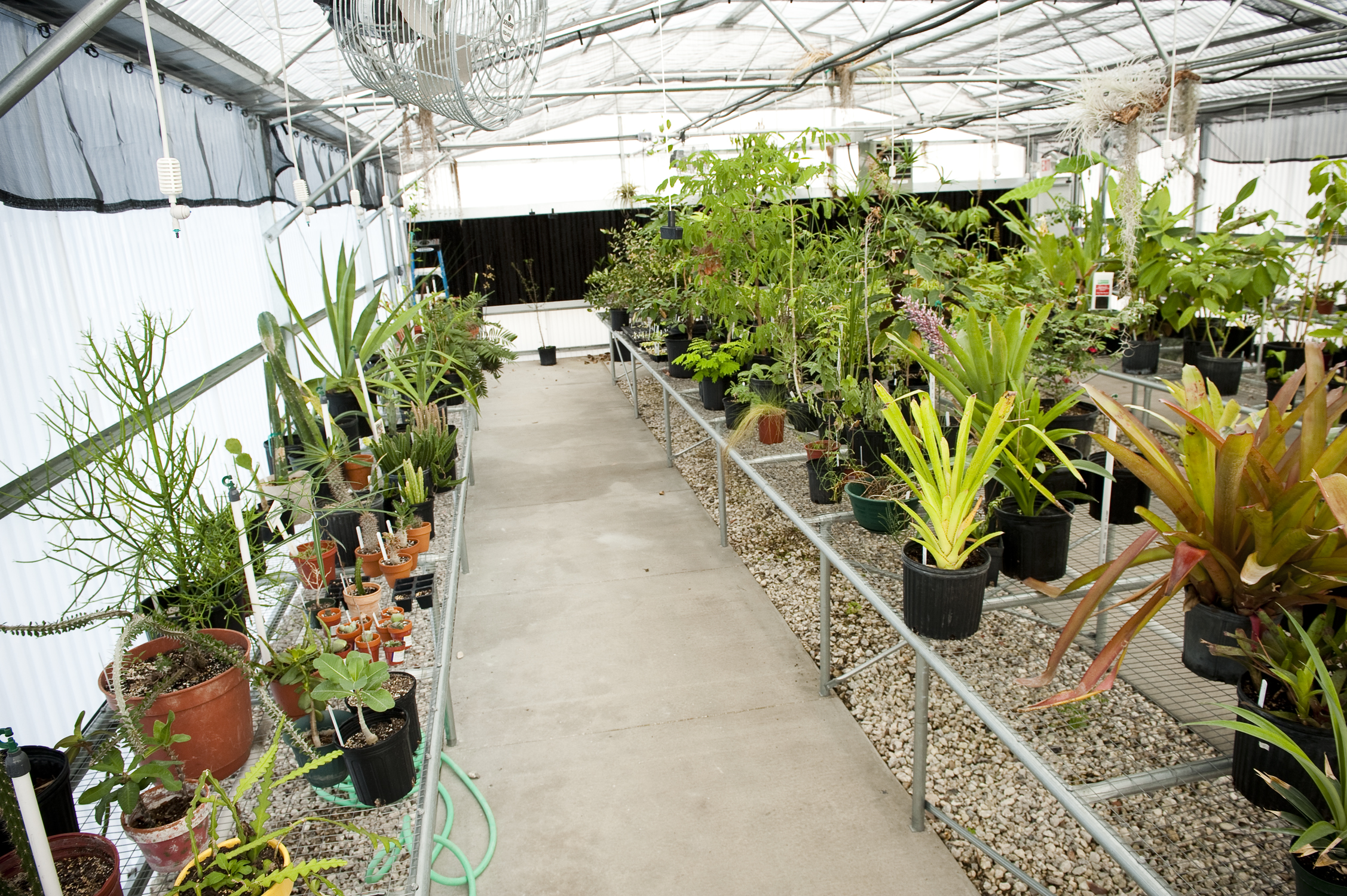Thanks to a new greenhouse on the East Campus, students enrolled in science courses including Biology I & II, Neotropical Biology, Ethnobotany, Environmental Science and Biological Science are now able to view physical examples of the plants they learn about in the classroom. Not only has this allowed for students to learn visually but in some cases by touch, smell and even taste.
The 30′ x 48′ x 15′ greenhouse is home to a worldwide collection of plants, representing more than 300 species from 83 families. By showcasing as many plant families as possible, the greenhouse helps students to see first-hand the great diversity that exists among plants.
There are many rare and unusual plants in the greenhouse, including carnivorous plants, orchids, tropical fruit trees, native plants and a large collection of ethno-botanicals. Ethnobotany is the study of how indigenous people use plants for food, shelter, medicine and material things like textiles, poisons and fuel.
“Students learn that there are many secrets to discover from shamanic wisdom and the powerful plants used,” said biology professor Steve Myers. “Perhaps the cure for cancer, AIDS, and other diseases lies within plants from rainforests and other wild places. Perhaps there will be plants out there we will use as a new fuel source or perhaps a new food source.”
The greenhouse also teaches lessons in environmentalism. To keep from expending unnecessary energy, the greenhouse uses an environmental control program that can automatically adjust heating and watering settings to keep them at the desired levels. Plans are also in the works to start composting the waste material from the greenhouse.
Some of the interesting plants within the greenhouse include:
Welwitschia mirabilis of the Namib Desert in southwest Africa
This gymnosperm starts with only two strap-like leaves and never acquires any more. Carbon-14 tests show that Welwitschia can attain an age of 2,000 years old.
Titan Arum, Amorphophallus titanium
Has the largest un-branched inflorescence (cluster of flowers arranged on a stem) in the world.
Jackfruit, Artocarpus heterophyllus
Originating in the Western Ghats of India, this is the largest tree borne fruit in the world, attaining a maximum weight of 110 pounds.
Stylidium or the “Trigger Plant”
Has a ‘trigger” that is composed of male and female reproductive organs that snaps forward when touched by an insect, covering the insect in pollen.
Hoodia gordonii
Used by the San Bushmen in Kalahari Desert of southern Africa to suppress appetite when they are making long hunting trips.
Nepenthes, or tropical pitcher plants of Asia
Carnivorous plants that trap insects and sometimes even small mammals in their pitcher, a deep cavity filled with liquid that dissolves the prey.
Miracle Fruit, Synsepalum dulcificum
This African plant produces berries that when eaten will cause sour foods to taste sweet.
The Thunderstorm Orchid, Dendrobium crumenatum
A unique orchid found in Malaysia that blooms shortly after a thunderstorm. The sudden drop in temperature and sudden inundation of water triggers dormant flower buds to bloom.

Comments are closed.